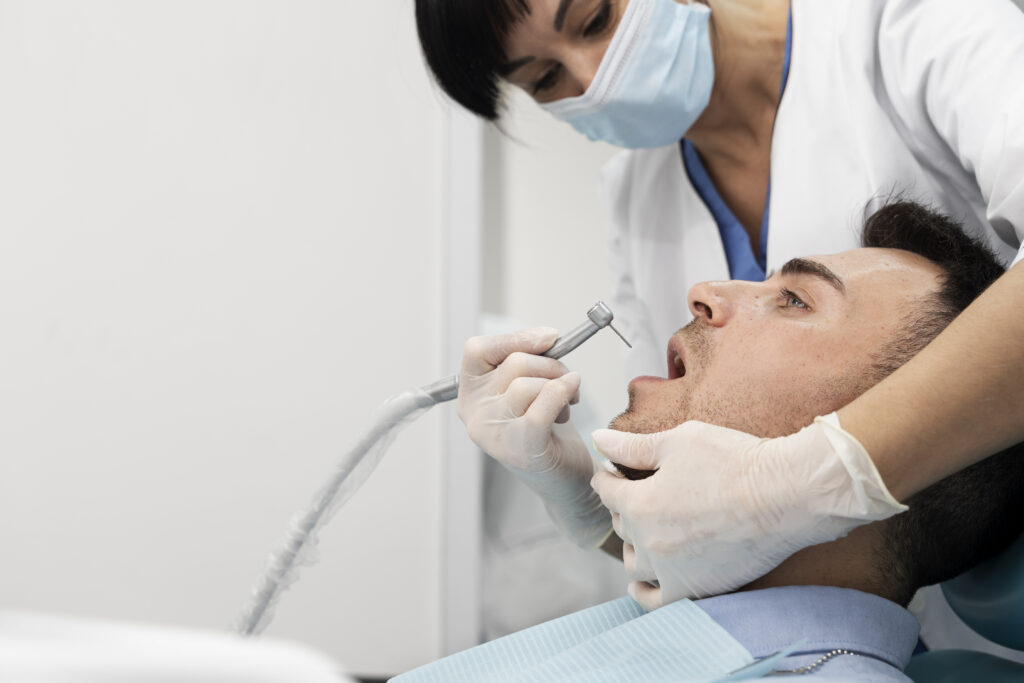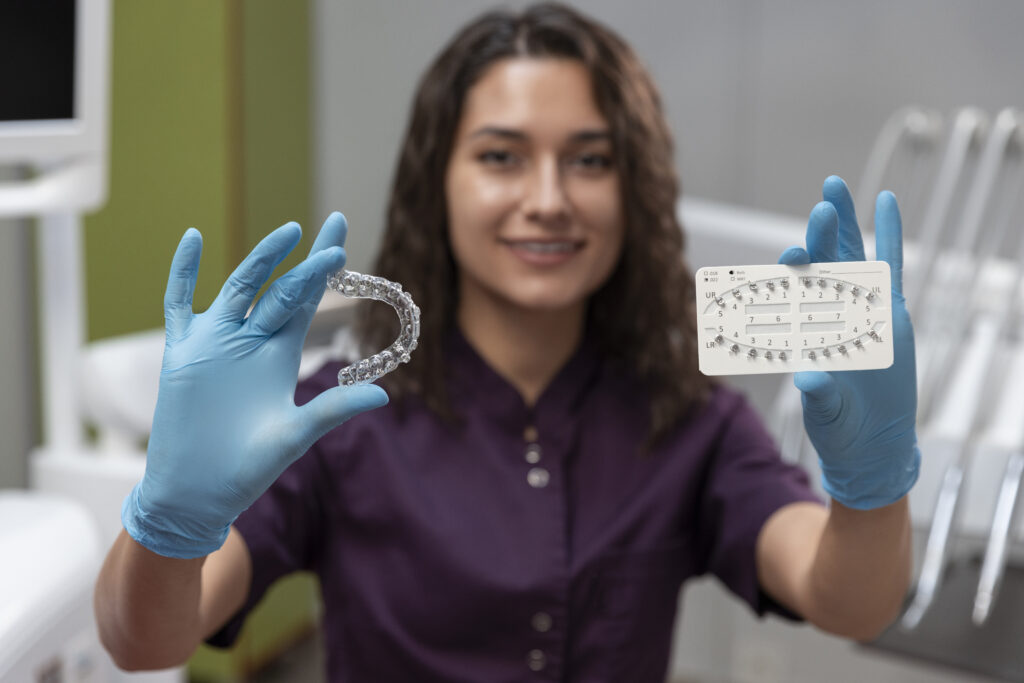Dental emergencies can happen at any time, and they often do so without warning. What you do in the first few minutes can have a big effect on what happens next. If you practice emergency dental procedures at home, you’ll be ready to act quickly and effectively when a dental emergency happens. This information can help keep things from getting worse and might even save a tooth.
Why Everyone Should Know Emergency Dental Procedures
When you have an emergency like a knocked-out tooth, a broken crown, or a sudden toothache, you can’t wait for the dentist to open. Being ready gives you the power to act right away, which lessens pain and damage.
Common Dental Emergencies and Their Impact
Dental emergencies can happen to anyone, from children to adults. Some common situations are:
- Knocked Out Tooth: Teeth can come loose from sports injuries or accidents. Sometimes, acting quickly can save the tooth.
- Chipped or Broken Tooth: Biting down on hard things or falling unexpectedly can break teeth, which hurts and makes infections more likely.
- Lost Filling or Crown: If you lose dental work, it can expose nerves, which can make you feel uncomfortable and sensitive.
- Sudden Toothache: Infections, decay, or injury can cause severe pain that comes on suddenly and at bad times.
- Object Stuck Between Teeth: Food or debris that is stuck tightly can hurt and make your gums feel sore.
The Consequences of Not Acting Fast
If you don’t get to the dentist right away for an emergency, you could lose teeth, get infections that spread, or cause permanent damage. Sometimes, acting quickly can mean the difference between keeping and losing a tooth. That’s why it’s important to know how to do basic dental work at home in case of an emergency.
Practical Steps to Practice Emergency Dental Procedures at Home
Knowing the procedures is one thing, but putting them into practice guarantees that you’ll be ready for any emergency. Dental equipment is not necessary; basic drills and preparations increase readiness and confidence.
Handling a Knocked-Out Tooth
A knocked-out tooth is one of the most urgent dental emergencies.
Immediate Actions to Take
- Find the Tooth: Don’t grab it by the root; grab it by the crown (chewing surface).
- Rinse Gently: If the tooth is dirty, rinse it with milk or saline water. Don’t scrub or pull off tissue that is stuck.
- Try to Reinsert: If you can, carefully put the tooth back in its socket and hold it there.
- Keep Moist: Keep the tooth moist in milk or saliva if you can’t put it back in.
- Seek Professional Help: You have the best chance of saving the tooth if you get to the dentist within 30 minutes.
Managing a Chipped or Broken Tooth
Chipped or broken teeth are common and can be painful.
Simple Home Steps
- Rinse Mouth: Use warm water to clean the area.
- Stop the bleeding: Put a cloth on the bleeding areas for about 10 minutes or until the bleeding stops.
- Reduce Swelling: Put a cold compress on the outside of the mouth or cheek to help with swelling.
- Save the Pieces: If you can, put the pieces of your broken tooth in milk and take them to the dentist.
Responding to Lost Fillings or Crowns
Losing a filling or crown can expose sensitive parts of your tooth.
Temporary Relief Methods
- Clean the Area: Rinse your mouth with warm salt water.
- Temporary Protection: Use dental cement from the pharmacy to cover the exposed area. Sugarless gum can also be used in a pinch.
- Visit the Dentist: These are temporary fixes; professional dental repair is necessary.
Dealing with Severe Toothache
Toothaches can strike suddenly and become unbearable.
Pain Management
- Rinse and Floss: Clean the mouth to remove trapped food or debris.
- Cold Compress: Apply outside the cheek for pain relief.
- Over-the-Counter Pain Relief: Use non-prescription painkillers as directed.
- Avoid Heat: Do not put aspirin directly on gums or teeth.
The Benefits of Practicing Emergency Dental Procedures
Practicing these steps at home prepares you for the real thing. It allows every member of the family to know what to do and where to find necessary items like gauze, milk, or a cold pack.
Building a Simple Dental Emergency Kit
Having supplies on hand is as important as knowing the steps.
Essential Items to Include
- Sterile gauze pads
- Small container with a lid (for teeth or fragments)
- Saline solution or bottled water
- Over-the-counter dental cement
- Cold packs
- Latex or nitrile gloves
- Pain relievers suitable for all family members
Place your kit in a spot known to everyone, and review its contents regularly.
Practicing Drills as a Family
Just like fire drills, dental emergency drills help reduce panic. Assign roles: who finds the dental kit, who calls the dentist, and who provides first aid. Rotate roles so everyone knows each step.
Making Practice Realistic
- Use props like fake teeth or dolls for young children.
- Practice describing symptoms and asking for help.
- Set a timer to simulate acting quickly.
When to Seek Professional Dental Help
Home treatments can help a lot, but they can’t replace professional care. Practice helps you deal with the situation until you get to the dentist. Know when a problem is too big for home help, like when you can’t stop bleeding, your face is swelling, or you have a high fever.
The Role of the Dentist After an Emergency
Your dentist will assess the injury, perform repairs, and give instructions for recovery. Always call ahead and explain the situation so they can prepare for your arrival.
Taking Control of Dental Emergencies
If you know and practice emergency dental procedures at home, you’ll be ready to deal with dental emergencies with confidence. It keeps people from panicking, protects teeth, and can even stop more damage from happening. Go over what to do in an emergency, get a dental kit, and have everyone in your family practice. The best way to protect your teeth in an emergency is to be ready.





